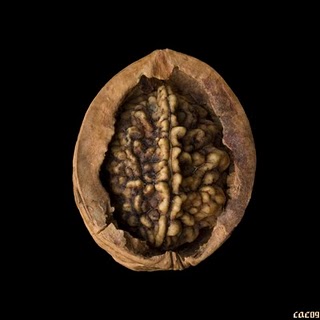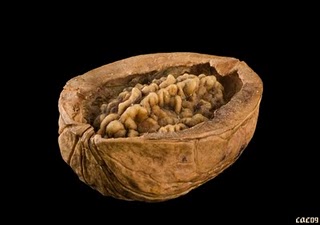The rudraksha tree grows in Indonesia, India, China, Nepal the Solomon Islands, Mariana Islands, Guam, Rota, Papua New Guinea and Hawaii.
For thousands of years the tree has been very important wherever the religion of Hinduism is practiced. The seeds of the rudraksha tree have great power for Hindus including many health and economic benefits and the removal of sins.
The seeds of the rudraksha tree fruit are believed to be the tears of Lord Shiva, one of the major Hindu gods. “Rudra” means Shiva and “aksha” means eye.
Mariannas flying foxes like to eat the iridescent blue berries as do species of flying foxes in India and the Himalayas. By dropping the seeds the bats help to plant rudraksha trees.
The word walnut derives from Old English wealhhnutu, literally “foreign nut”, wealh meaning “foreign”. The walnut was so called because it was introduced from Gaul and Italy. The Latin name for the walnut was nux Gallica, “Gallic nut”.
The 21 species in the genus range across the north temperate Old World from southeast Europe east to Japan, and more widely in the New World from southeast Canada west to California and south to Argentina. The Latin name, Juglans, derives from Jupiter glans, “Jupiter’s acorn”: figuratively, a nut fit for a god.
As grass and other plants will not grow well under Walnut-trees, they are commonly banished to hedgerows, road-sides, and odd corners.



You made me learn something…how dare you!!! lol j/k cool post and really pretty pictures.
The word Rudraksha literally means the tears of Lord Shiva. In the physical form, rudraksha is the seed of the Elaecarpus ganitrus tree, which is commonly used for making Rudraksha Malas or Rosaries.